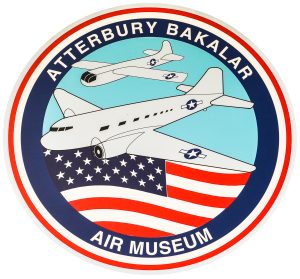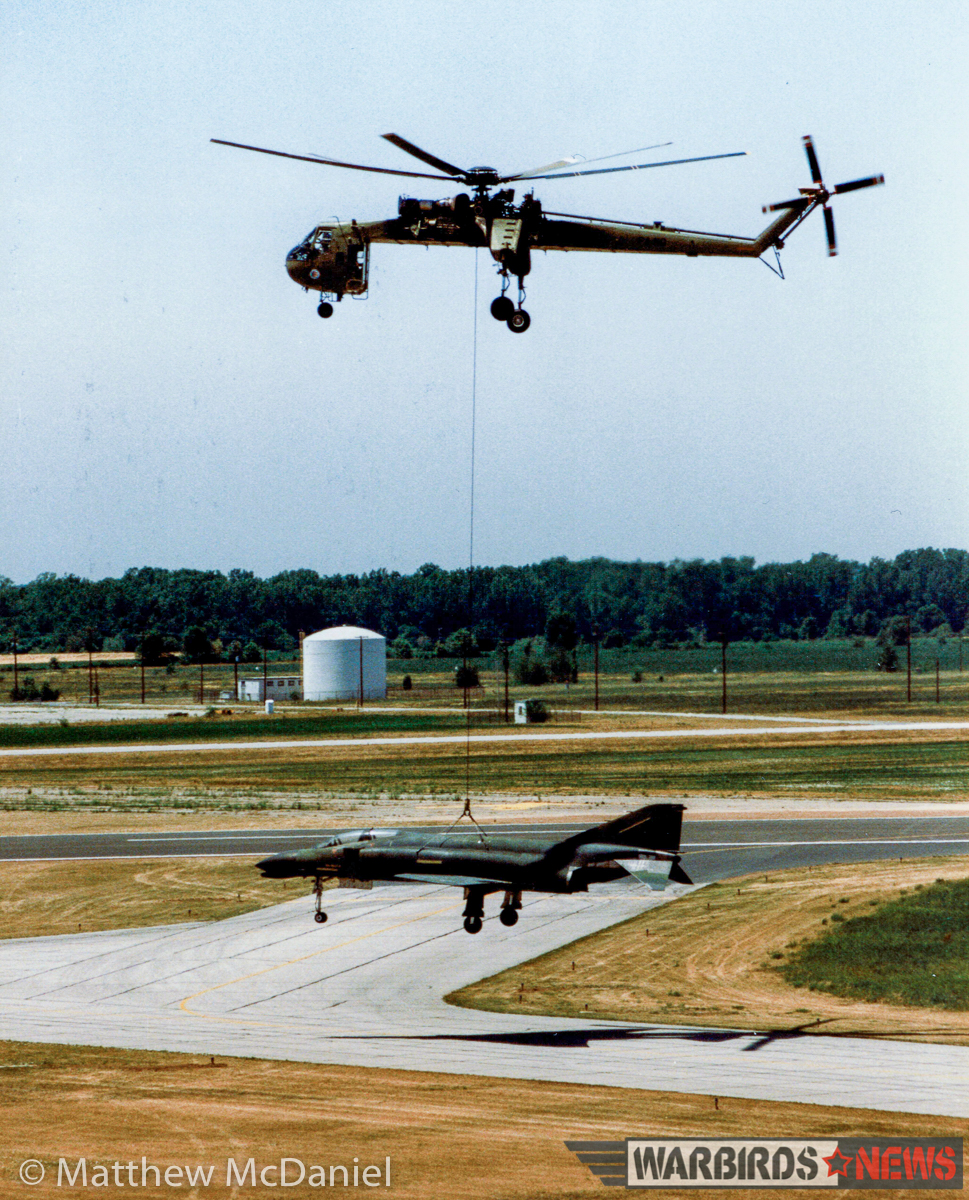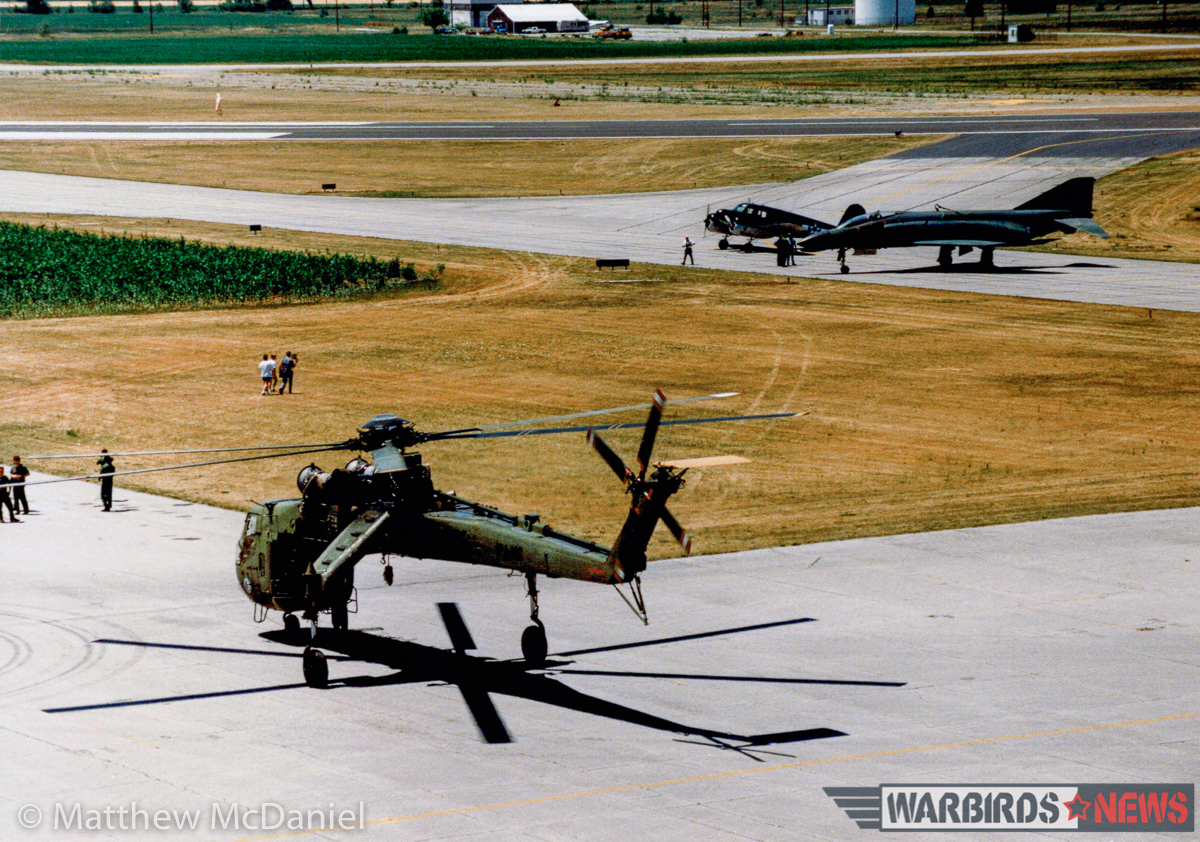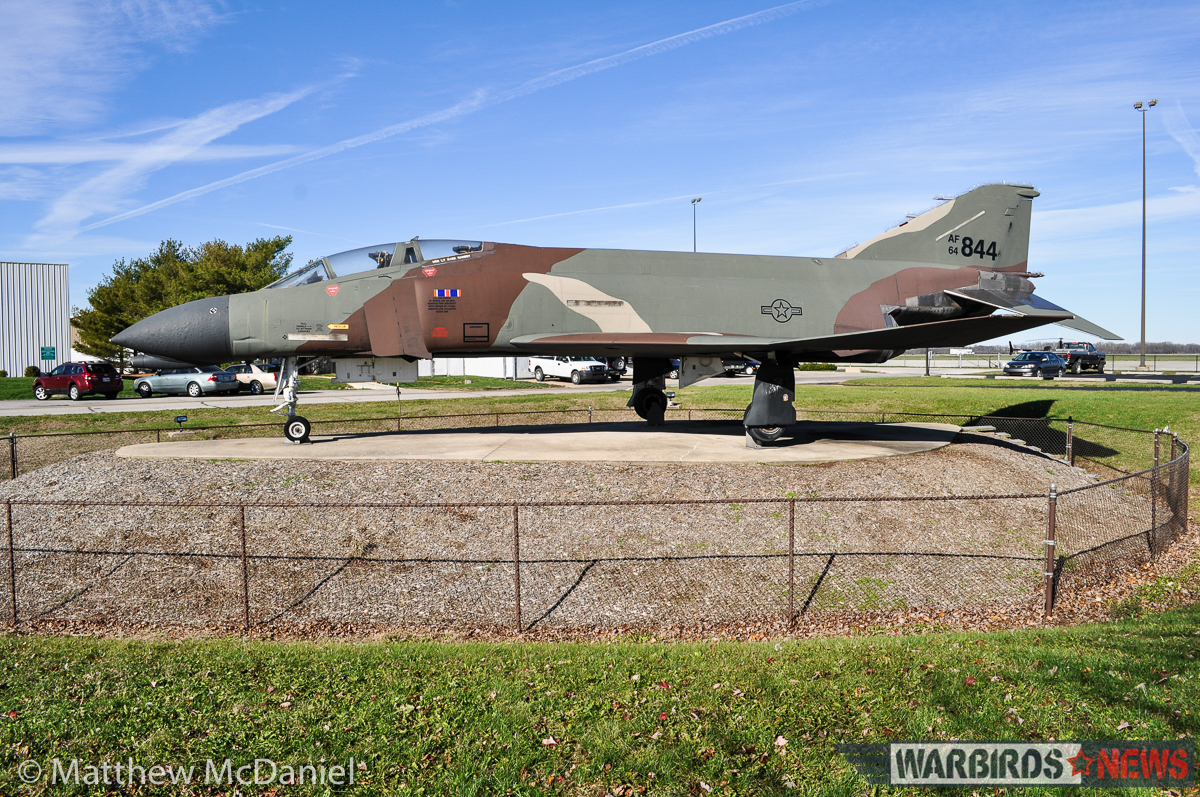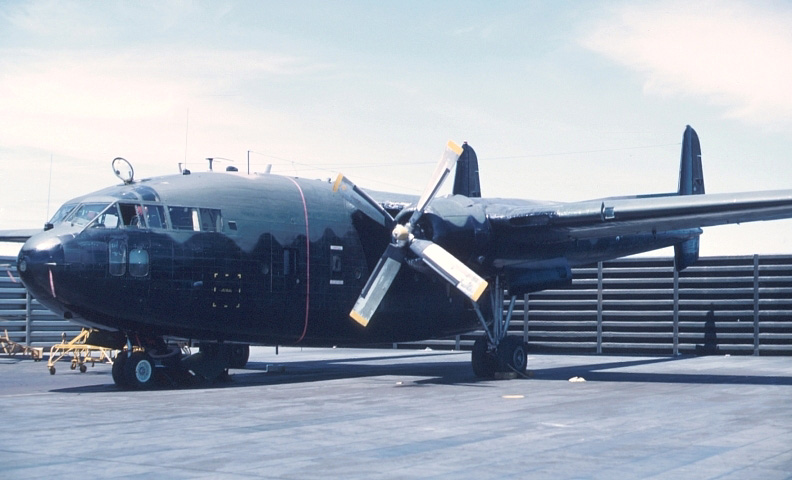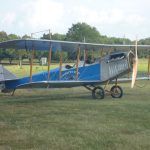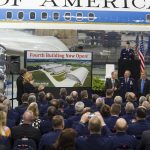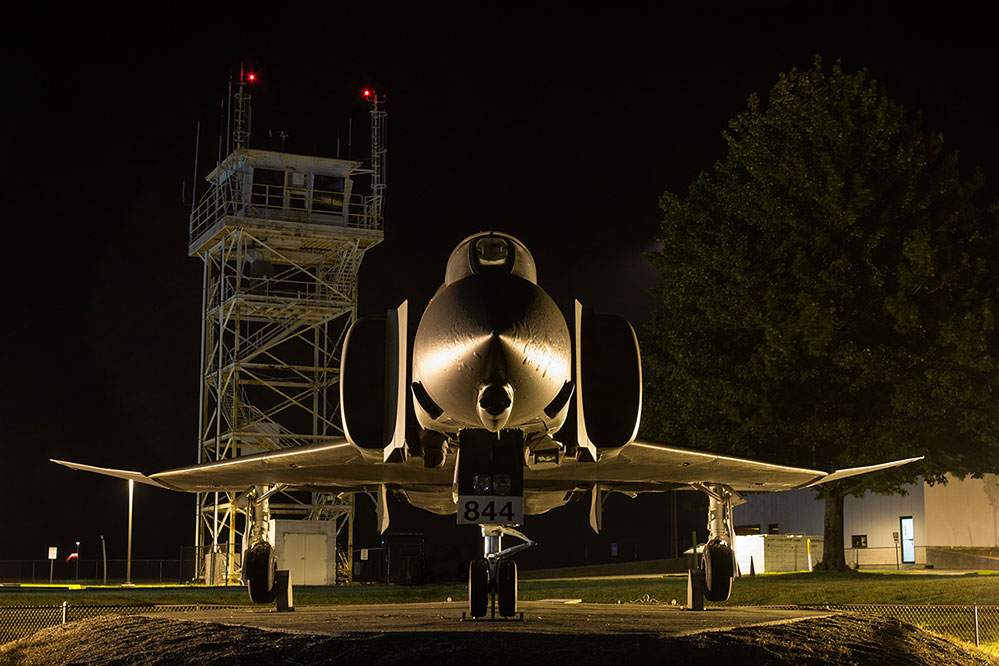
Gliders to Gunships – The Atterbury-Bakalar Air Museum: A Jewel of the Midwest
by Matthew McDaniel
The many small military and aviation museums dotting the United States rarely get the attention or patronage they deserve. Largely staffed by volunteers and operating on shoe-string budgets, they are almost always a labor of love for a small group of local historians who make it their mission to chronicle the past for current and future generations. Columbus, Indiana’s Atterbury-Bakalar Air Museum is just such a place; a museum detailing the rich history of a largely-unknown air base.
Atterbury Army Air Base opened in February 1943 and served as a training station for Martin B-26 Marauder medium bomber crews, combat glider pilots, and glider tow-plane flight crews during WWII. The name came from the previously established Camp Atterbury Army Base, located 14 miles to the northwest. The Air Base also served as the landing field for medical transport flights to/from Wakeman Army Hospital Center, within Camp Atterbury. Deactivated for a short time following the war, the field reactivated as Atterbury Air Force Base in 1949. In 1954, the US Air Force officially re-dedicated the facility as “Bakalar Air Force Base” in honor of native-Hoosier, 1st Lt. John Bakalar, who died during WWII when his P-51 Mustang suffered a catastrophic engine failure on takeoff. Bakalar AFB went on to host many Training, Cargo, Transport, and Special Operations Squadrons, flying such aircraft as the C-46 Commando, the C-47 Skytrain, and the C-119 Flying Boxcar, until its closure in 1970. However, for museum volunteers and patrons alike, the most fascinating era remains the WWII years, when huge Waco gliders and their Douglas and Curtiss tow-planes were a fixture in the skies overhead Columbus residents.
Today, the museum displays all manner of items related to the historic airbase, from large-scale models of the aircraft that once called it home, to archives full of documents and photographs, to professionally displayed artifacts.
There is a full-scale replica of a portion of one of the typical barracks buildings that once housed hundreds of airmen on the base. Many such barracks buildings survived into the 1990’s, but most are gone now. One exception is the Base Chapel which, externally, resembles the barracks buildings typical to the Base, albeit with the addition of a steeple and more attractive main entrance. Museum volunteers have completed a detailed and historically accurate restoration, effectively making the chapel a museum annex (as it’s located a few blocks from the main museum site). However, the crown jewel of the museum’s collection is a fully restored cockpit section from a rare Waco CG-4A combat glider. Used for both troop and cargo transport, the Waco weighed in at a whopping 7,500 lbs. when fully loaded with its official maximum payload of 3,900lbs. However, the gliders routinely operated at 9,000lbs or more when they carried “emergency loads” (including Jeeps, Howitzers, ammunition, and/or battle-ready troops) into combat zones. The museum’s CG-4A cockpit is accurately detailed in every way, including fully functional flight controls. Best of all, it is displayed at floor level, where every nuance can be examined by visitors. The most recent expansion to the museum added a theater/media-room designed to evoke the inside of a CG-4. Actual CG-4A bench seats line the side walls and the room is trimmed with wooden framework and portholes similar to the glider’s interior!
Too extensive to detail here are the museum’s many displays, describing the base’s affiliation with the Tuskegee Airmen, it’s many Cargo-Transport and Special Ops Squadrons, and the rest of its fascinating history. Artifacts abound as well, including a meticulously restored WWII Willys Jeep (which is still driven on occasion), a fully operational military rotating beacon, and various historic items produced for WWII military needs by several world-renowned manufacturing companies based in Columbus, Indiana (Cummins Engine Co., Cosco Housewares, Inc., and Noblitt Sparks, Inc. [now ArvinMeritor Industries]).
Just outside the museum entrance is McDonnell F-4C Phantom II 64-0844. Originally delivered to the Columbus Municipal Airport (the city’s name for the former air base) in 1988, the Phantom was flown in beneath a Sikorsky CH-54 Tarhe heavy-lift helicopter. While no Fighter units ever called Bakalar AFB home, many passed through on maneuvers and during various military exercises from the WWII years through 1970. Jet-era fighter and attack aircraft have used (and still use) the expansive live-fire aerial gunnery range within nearby Camp Atterbury to practice bombing and gunnery techniques, including thousands of F-4 sorties during that aircraft’s operational lifespan. Mounted on an attractive ground-level base as the airport’s gate guardian, the massive fighter became a bit weather-worn after enduring a couple of decades alternating between Indiana’s notoriously baking summer heat and frigid winter snows. Though still technically under the airport’s authority, the museum eventually got involved in the Phantom II’s care, helping with preservation measures, a fresh coat of paint, and attractive landscaping. The F-4C again looks fantastic on its perch below the control tower and right outside the museum’s main entrance; a historic aircraft design and menacing presence, well preserved for future generations to enjoy.
Off the nose of the F-4, “Bakalar Green” is a walking park that contains several historical markers and monuments dedicated to the various servicemen and operational units based at Bakalar during it’s decades as an active Air Base. One such marker honors the 71st Special Ops Squadron, the Bakalar-based Unit that became the only Air Force Reserve Unit activated to fly combat missions in Viet Nam. Between May 1968 and June 1969, the 71st operated Fairchild AC-119G Shadow Gunships and earned both the Presidential Unit Citation and the Air Force Outstanding Unit Award in the process.
Like so many museums of similar size and mission, the Atterbury-Bakalar Air Museum is still FREE and asks only for donations to fund its operation and future expansion. As a charitable 503(c) corporation, donations to the museum are tax deductible.
If You Go:
Try to take an extra day (or even a few hours) to enjoy the Columbus Architectural Tour, which highlights the scores of architecturally significant buildings that helped to earn Columbus the nickname, “Athens of the Prairie.” Consistently ranked in the Top 10 U.S. cities for modernist architecture, Columbus has attracted travelers from around the world for decades thanks to the city planners’ long-term commitment to hiring world-renowned architects and to building unique structures and sculptures. Columbus has eight buildings listed as National Historic Landmarks and no less than 60 buildings considered as showcases of the modernist architectural style.
Driving in: The Museum is a quick drive from I-65, Exit #68 if coming north from Louisville or Exit #76 if coming south from Indianapolis.
Flying in: Navigate to Columbus Municipal Airport (KBAK), park in the transient parking directly in front of the Terminal and the Museum is a 2-minute walk across the parking lot. Fuel is available via the FBO (full service) or a self-service fuel pump.
Lunch is available at the Hangar 5 restaurant inside the airport Terminal building, or at dozens of establishments around the city, ranging from fast food to formal dining.
Visit the Atterbury-Bakalar Air Museum website at: www.atterburybakalarairmuseum.org
*******************************
About The Author: Matthew McDaniel is a Master & Gold Seal CFII, ATP, MEI, AGI, & IGI and Platinum CSIP. In 25 years of flying, he has logged 16,000 hours total and over 5,500 hours of instruction-given. Currently, he flies the Airbus A-320 series for an international airline, holds eight turbine aircraft type ratings, and has flown over 80 aircraft types. McDaniel is one of 25 instructors in the world to have earned the Master CFI designation for 7 consecutive two-year terms. He has been a freelance aviation author since 2003, and can be reached at: [email protected] or +1-414-339-4990.
Copyright 2016, Matthew McDaniel. First publication rights granted WarbirdsNews. All other rights reserved by copyright holder.








